Some of my favourite subjects. All photographs are by me, hence the occasionally dubious quality.
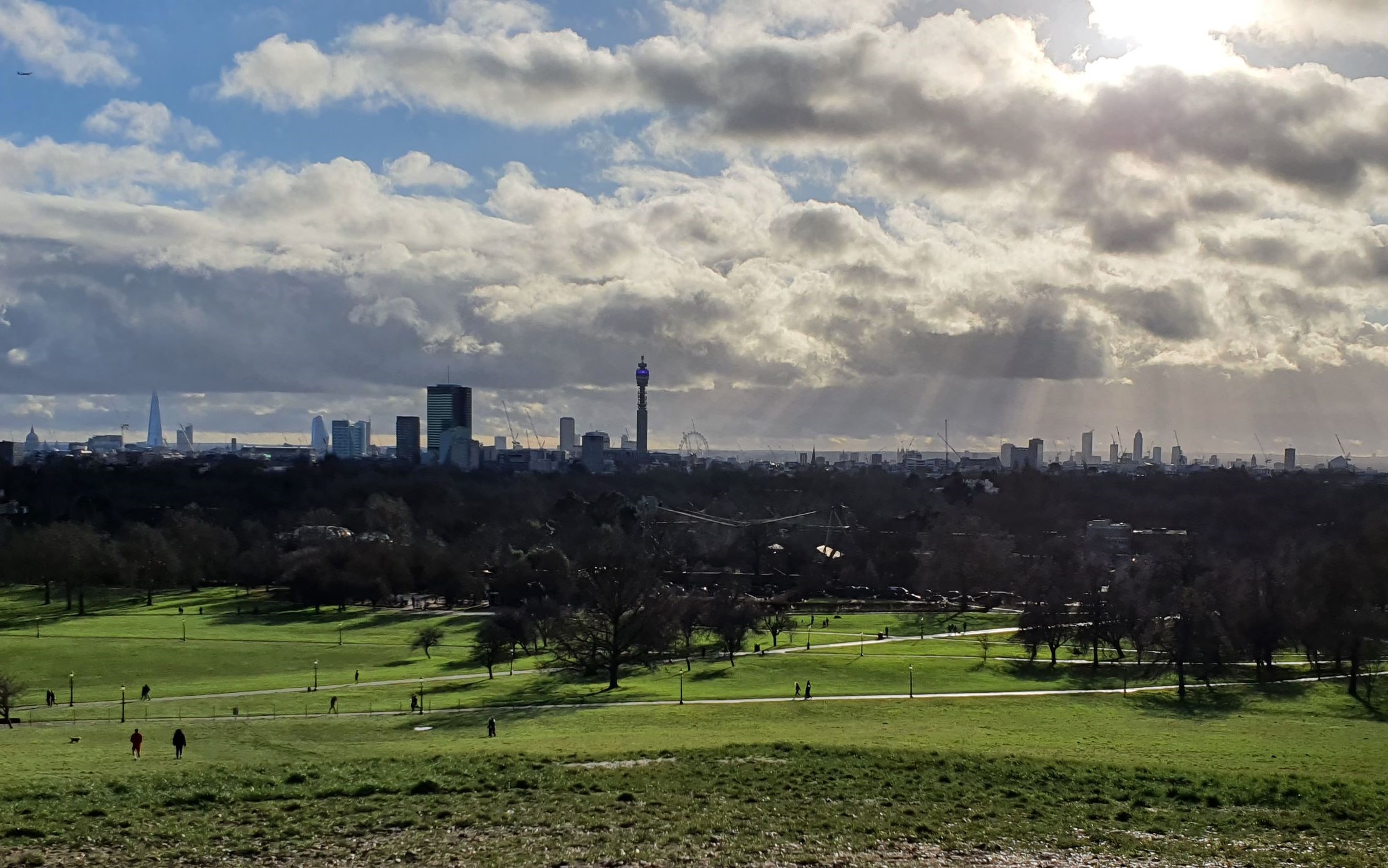
← The London skyline from Primrose Hill. As there no significant hills close to London, this is the best I can do. Just beyond the greenery in the foreground is London Zoo.
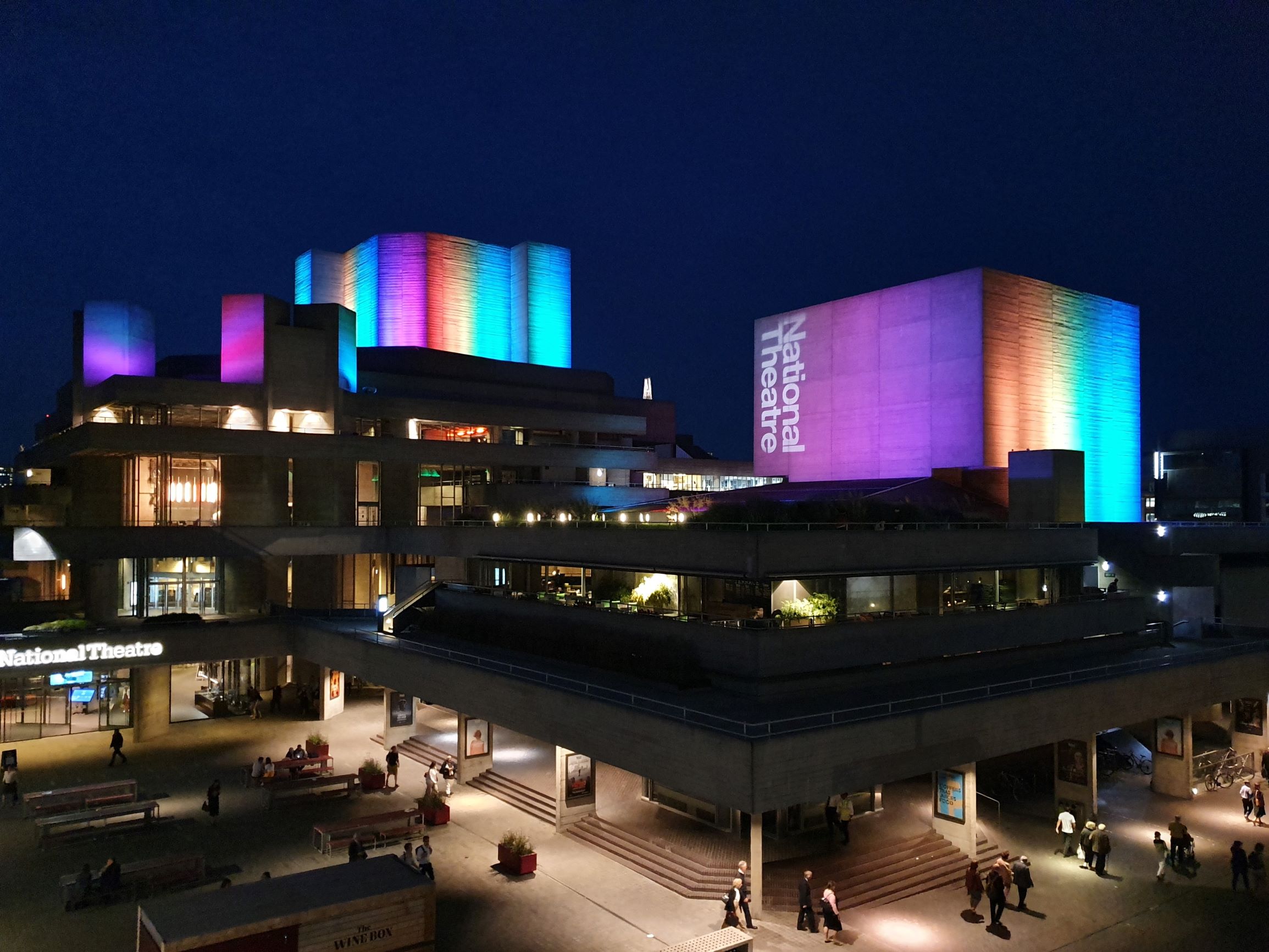
→ National Theatre, South Bank Not my favourite London building, but this brutalist 1970s icon looks great at night with this imaginative lighting.
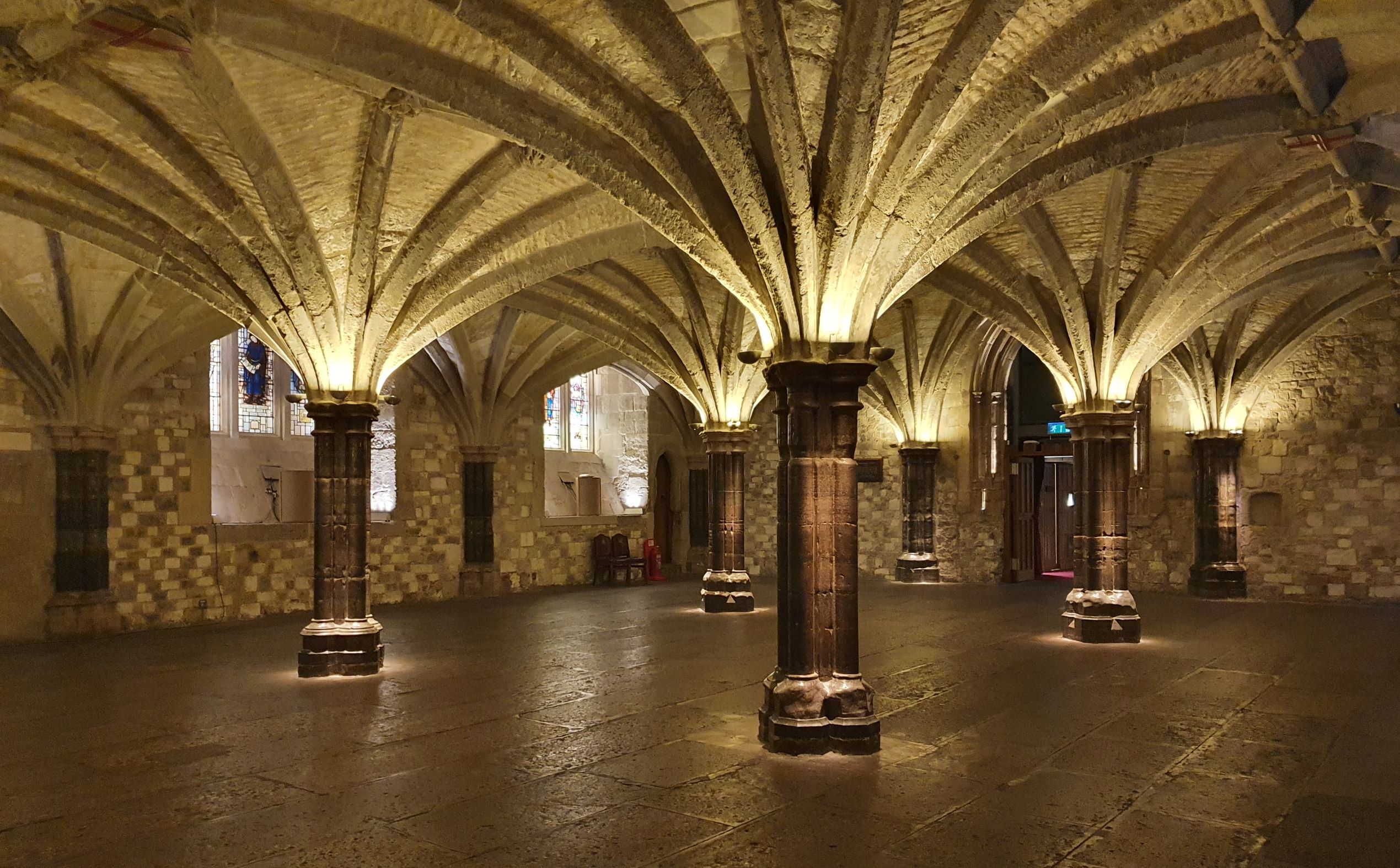
← Guildhall Crypt Dating from the early 15th century, the crypt is a staggering medieval survival, with later stained glass and a mighty impressive modern lighting scheme.
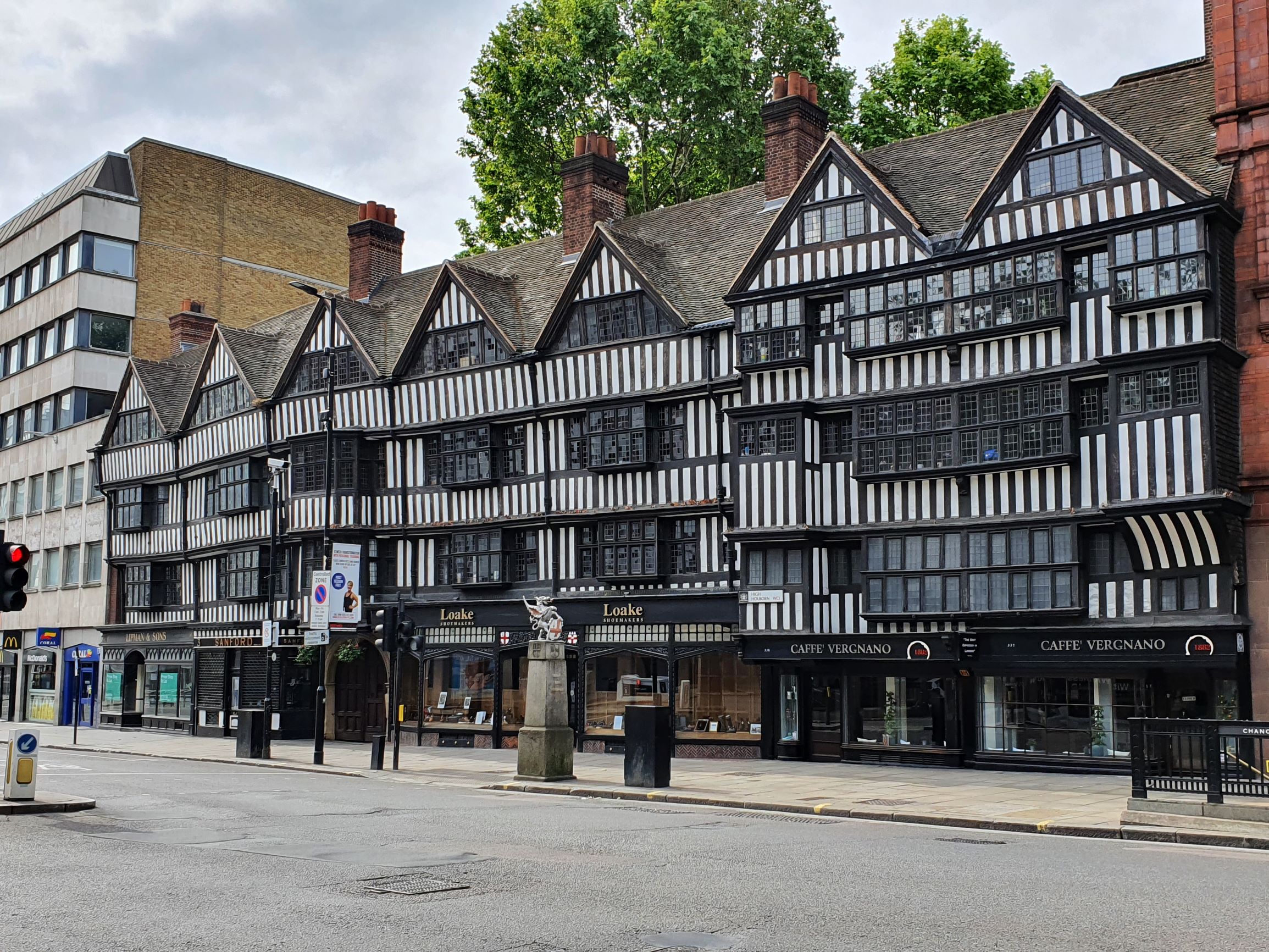
→ Tudor Houses, Staple Inn, Holborn An amazing survivor, the Great Fire got within about 150m. Sadly, there had to be some heavy restoration after the Blitz, particularly of Staple Inn Hall behind, but the sight of these buildings, built c.1545-1598, is extraordinarily evocative of a bygone age, conjuring visions of the pre-1666 city.
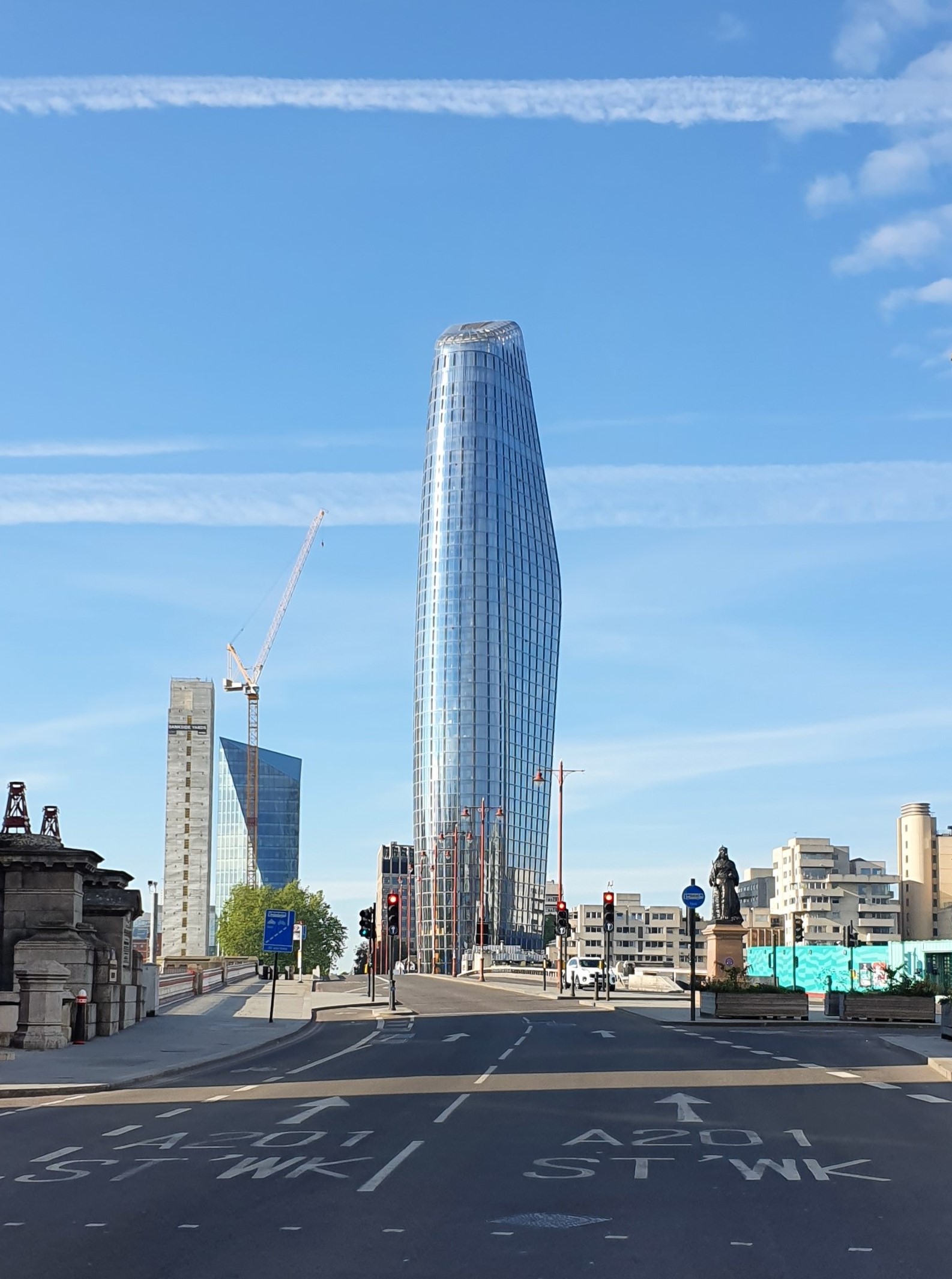
← One Blackfriars Taken from the northern approach to Blackfriars Bridge, this controversial tower looks almost ethereal in the early morning sunlight; the picture could almost be a computer-generated ‘artist’s impression.’
My pedantic side is, I must confess, riled by the name – it suggests the building is situated in Blackfriars. However, that district is wholly north of the Thames and the name actually refers to its address on Blackfriars Road.
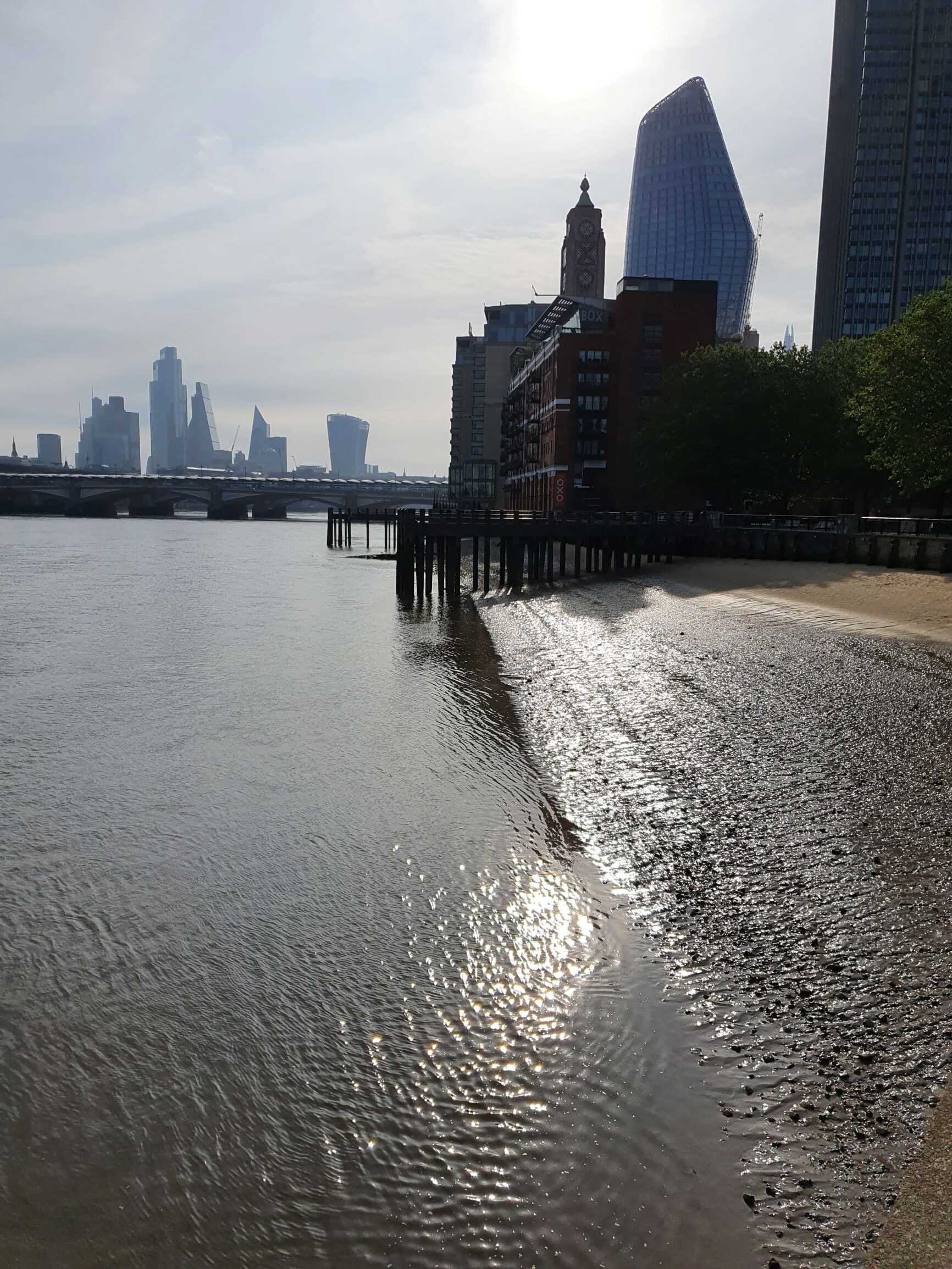
→ Thames Foreshore at Gabriel’s Wharf It’s difficult to believe that this serene view is the South Bank, across the Thames from Middle Temple in the heart of London. This is the closest the city centre comes to a beach, although dipping even a toe in the water is not to be encouraged.
So much history in one picture – from Gabriel’s Pier (the wooden structure at the end of the foreshore), and the dome of St Paul’s (centre extreme left), to One Blackfriars (top right) and the red brick Oxo Tower in silhouette just to its left.
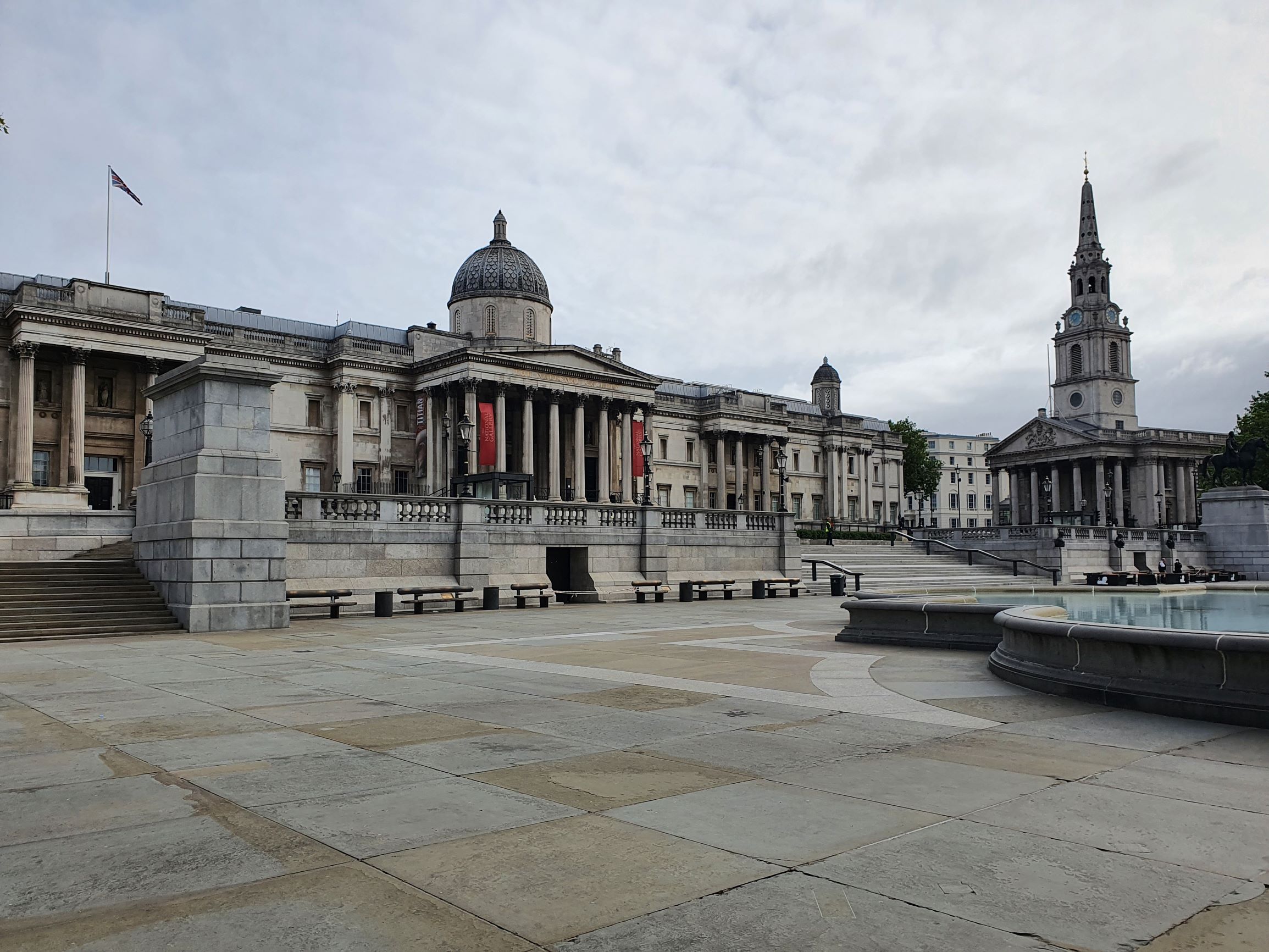
← National Gallery and St. Martin in the Fields, Trafalgar Square. The extraordinary sight of the square with neither people nor pigeons. This was taken during lockdown, and coincided with a visit by the council’s falconer, walking around with an attached falcon to scare away the other birds, so limiting environmental damage.
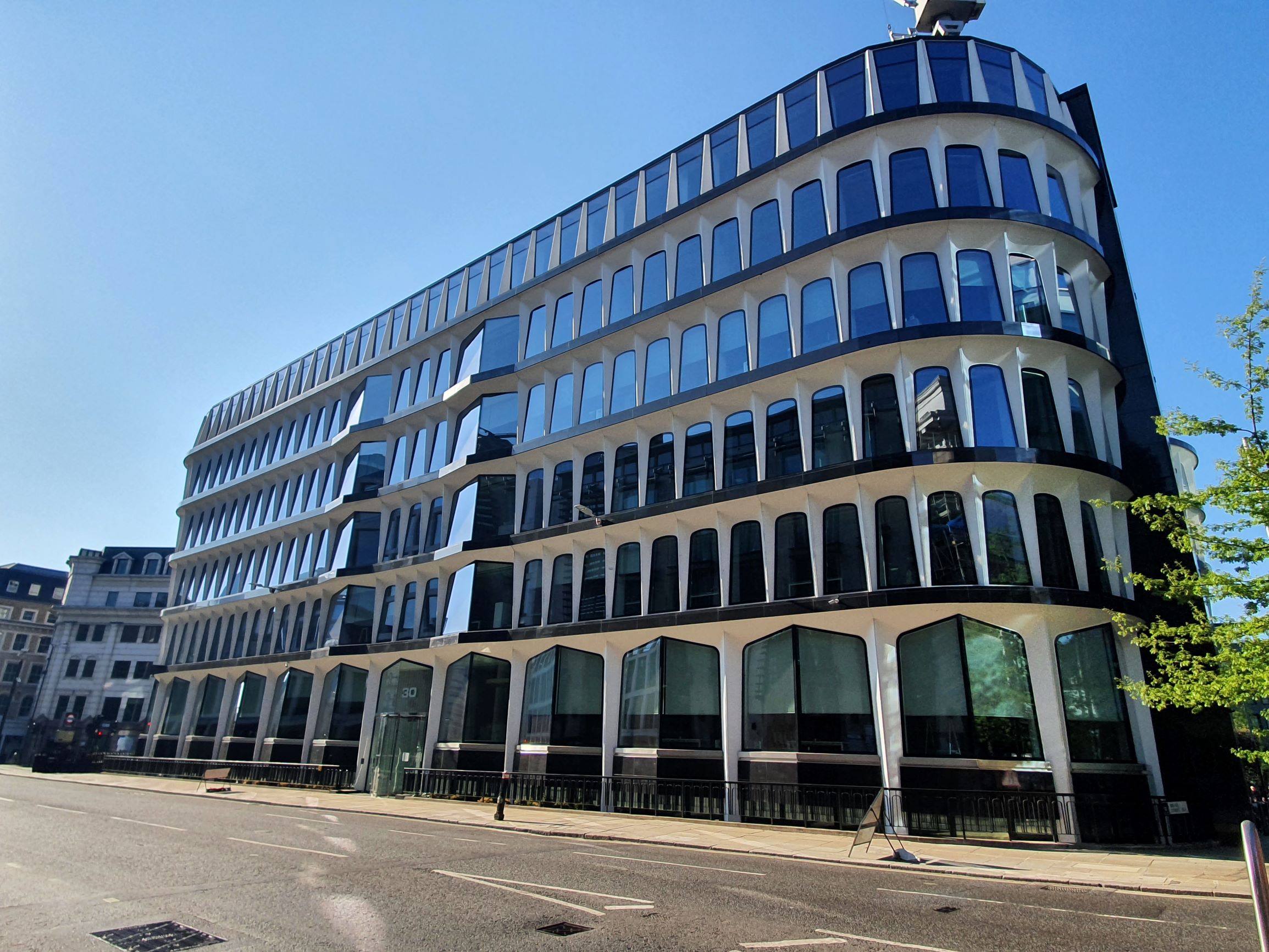
→ 30 Cannon Street, EC4M. The extraordinary former London HQ of Credit Lyonnais, recently revamped – much to its advantage, in my opinion. Deservedly listed.
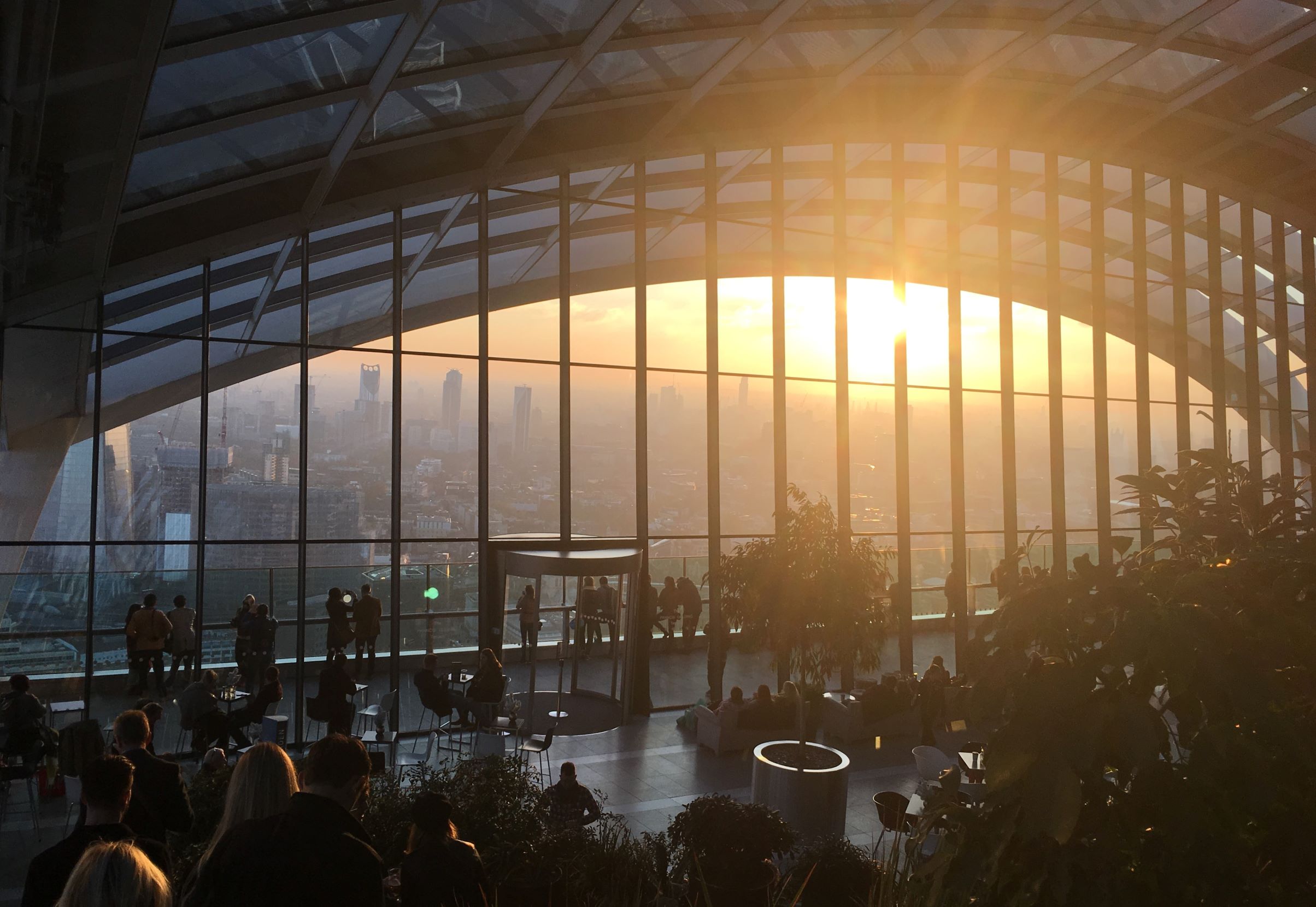
← Sunset over London from the Roof Garden of the Walkie-Talkie Building. Officially 20 Fenchurch Street, but who’s going to call it that when it’s the shape it is? The enclosed roof garden with outdoor terrace is fantastic – and open to the public. The restaurant within the garden is high quality but doesn’t come with any additional views.
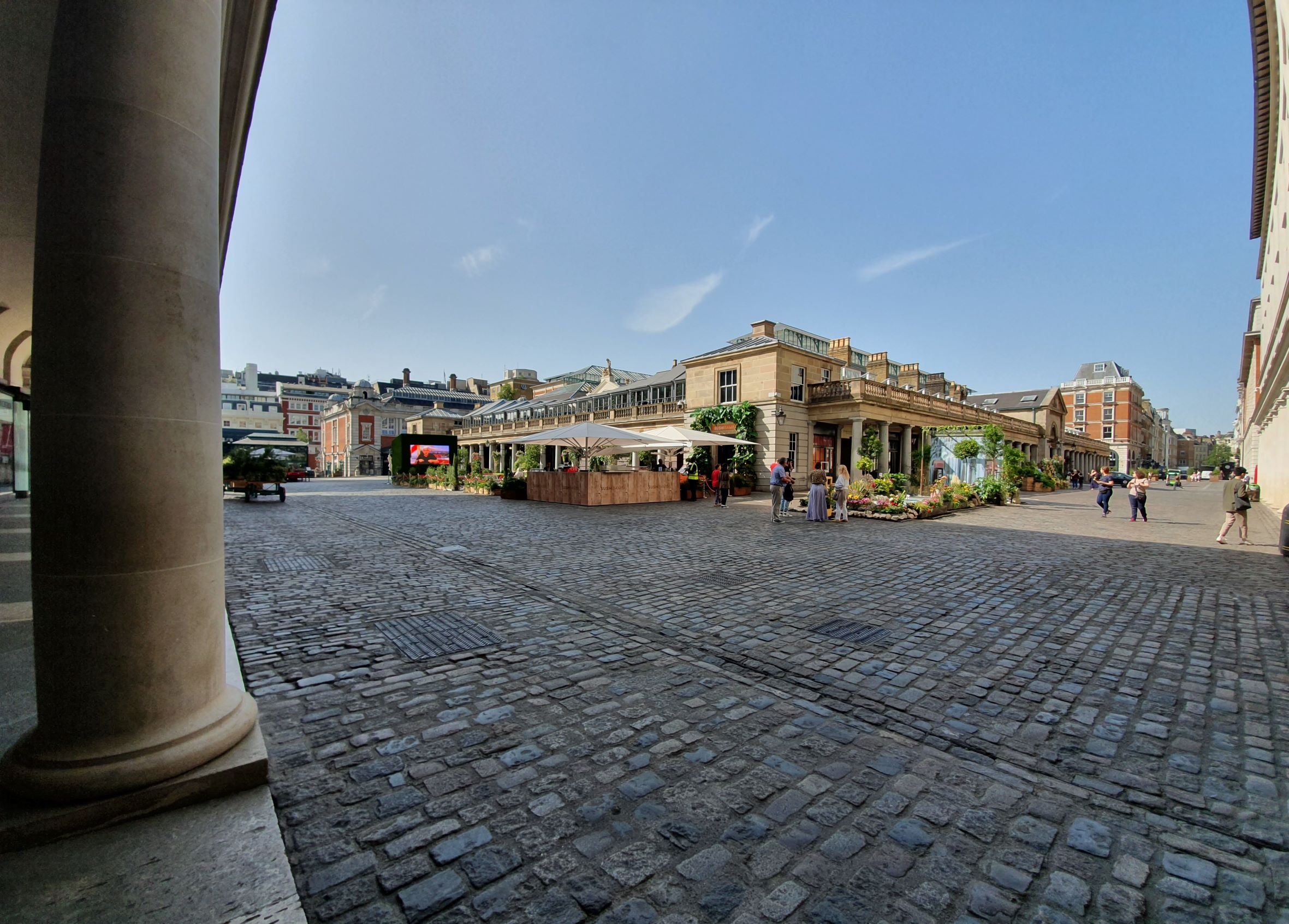
→ Covent Garden It might be crowded with tourists, but Covent Garden buzzes. From entertainers under the portico of St Paul’s Covent Garden, and opera singers giving it their all in the basement arcade, to the Transport Museum and restaurants. It’s also heaving with history, with origins as a convent garden, through rapid deterioration from high-class residential area to hangout of the demi-monde, and a renaissance after the departure of the market in 1973.
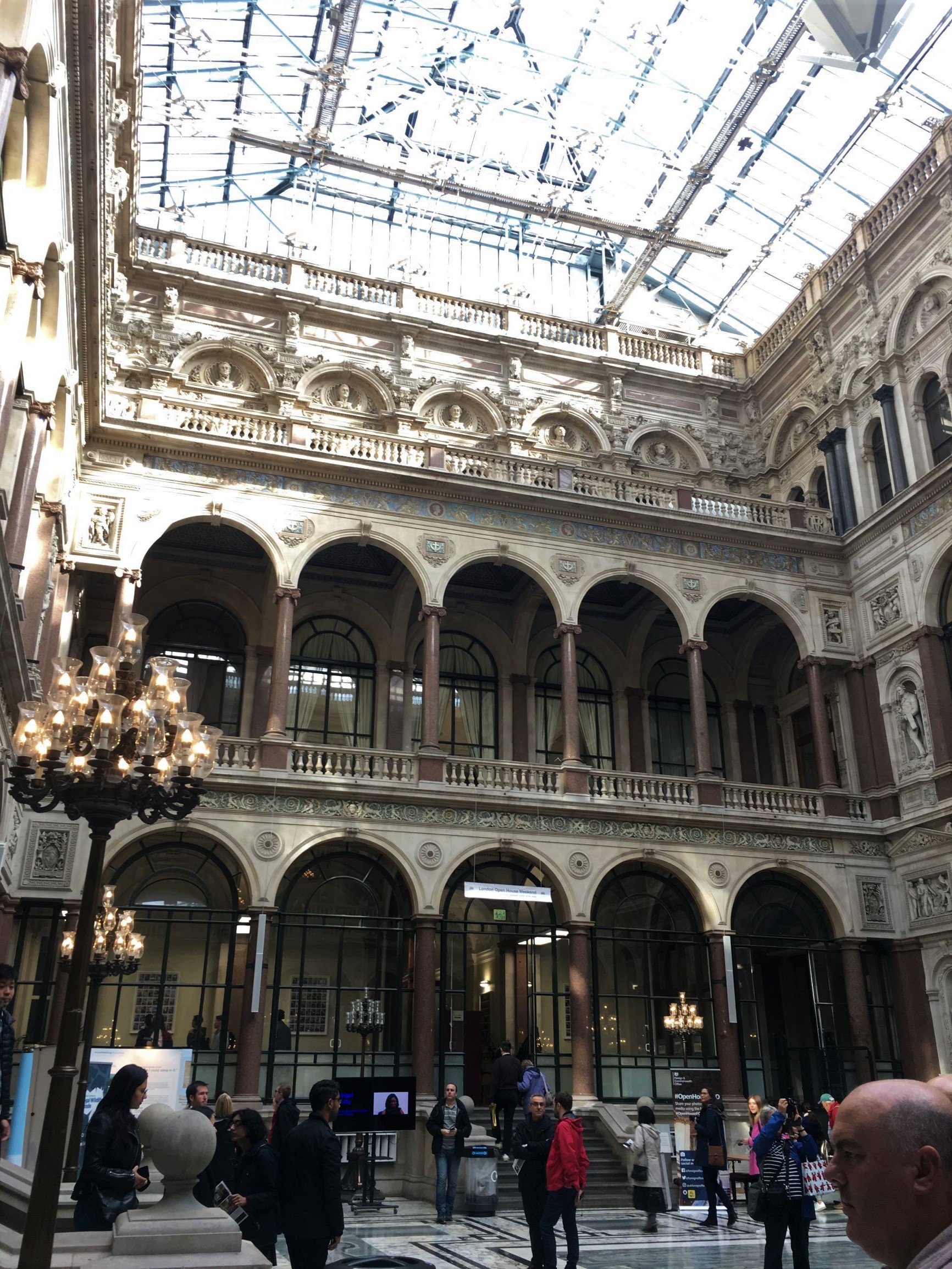
← The Durbar Court, Foreign Office, King Charles Street. Never mind the poor quality of the photo, gaze in wonder at where F.O. civil servants get to work, or more precisely, have coffee. This is a covered courtyard renamed when the F.O. stepped in to take on the rule of the Raj, after the East India Company experienced a spot of bother in 1857 (now referred to as the ‘Indian mutiny/rebellion’ – one person’s mutineer is another’s freedom fighter, after all.)
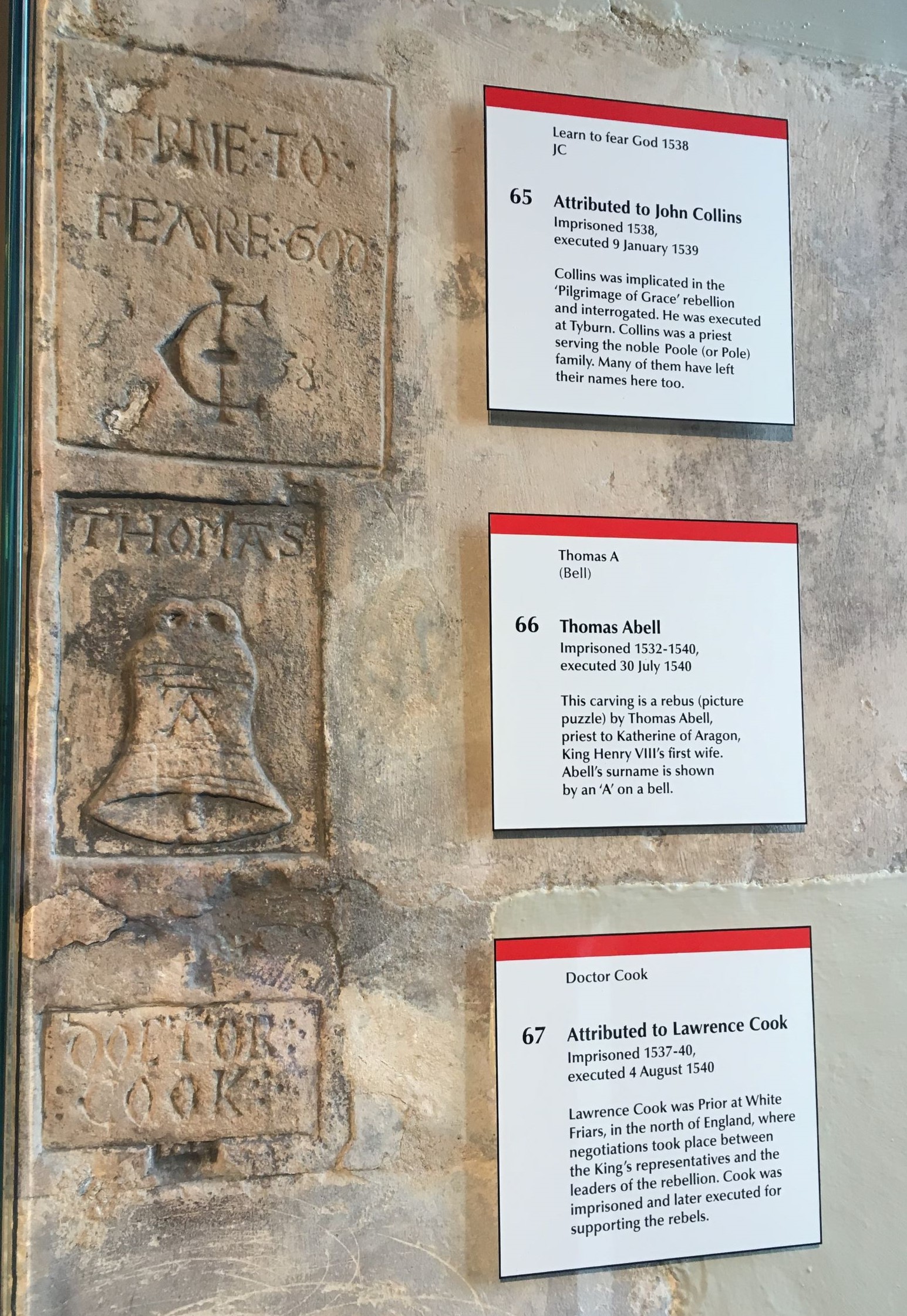
→ Graffiti, Tower of London. The Tower is rightly one of the most popular tourist attractions in London, and one of the most photogenic. However, I’ve chosen to show some of the sobering graffiti left by prisoners. All three of these men were later executed – around 480 years ago.
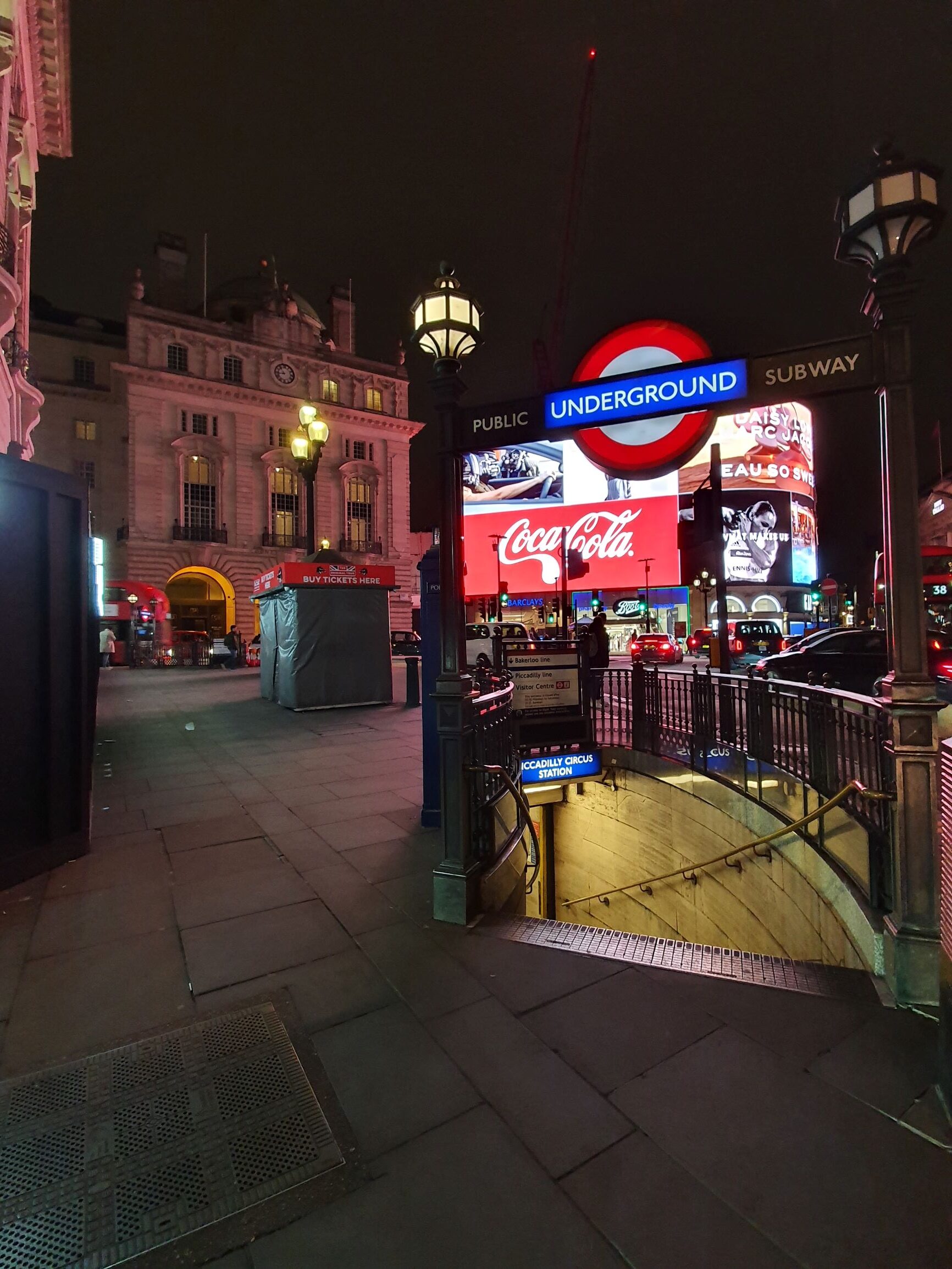
← Piccadilly Circus at night. The building in the background was previous the offices of the London Fire Brigade, the building just visible to the left is the former Swan and Edgar department store.
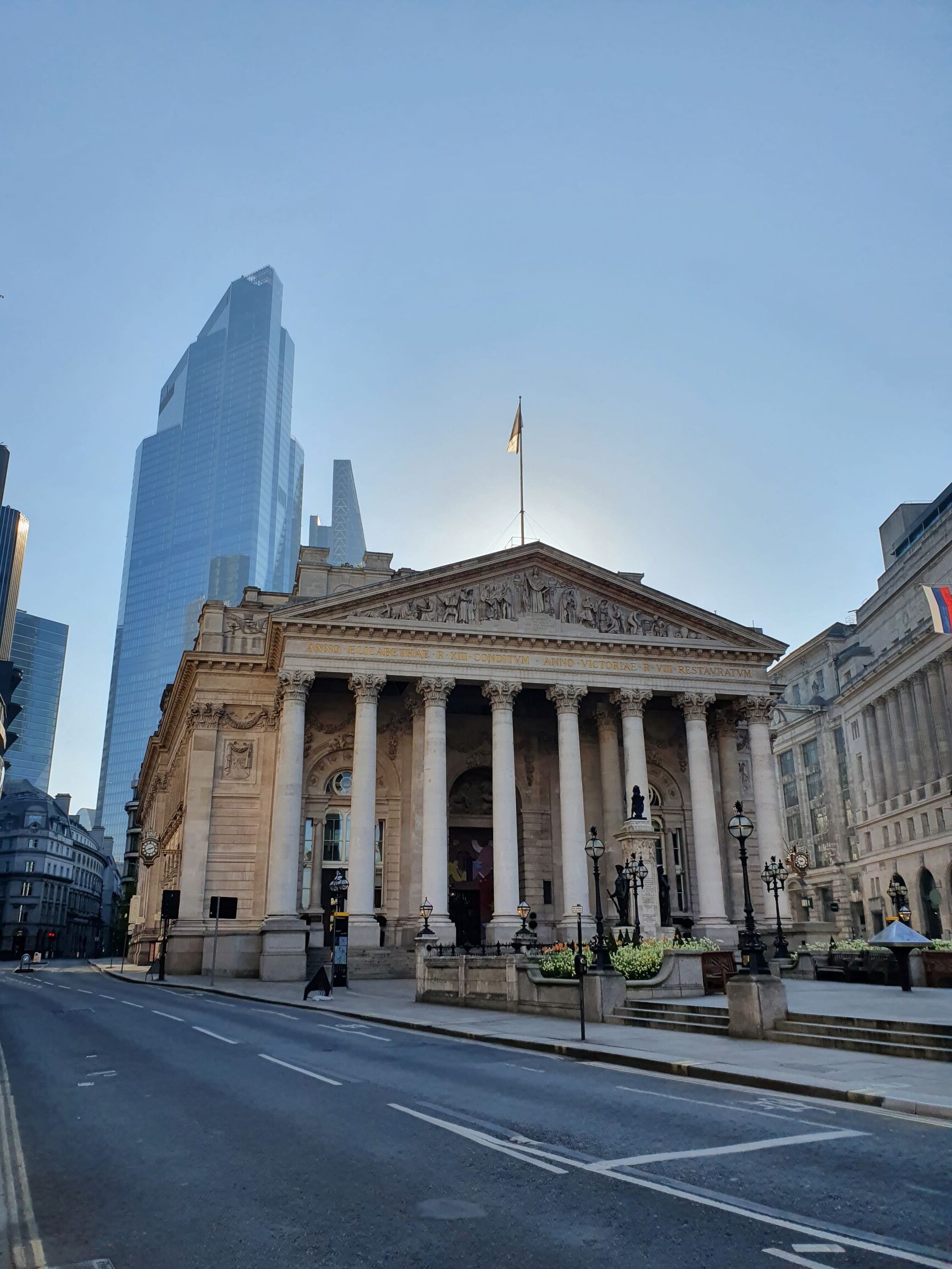
→ The Royal Exchange. An early Sunday morning photograph of the historic Royal Exchange – the third on the site , built in 1844. 22 Bishopsgate, the tower in the background, provides a pleasing juxtaposition – the future looming over the past. After trading ended in 1939, the Royal Exchange came back to life with the Mermaid Theatre housed in the courtyard for the 1953 Coronation season, the open outcry pits of the London Financial Futures Exchange (LIFFE) 1982 -1991, and lots of upmarket shops in the 21st century.

← The statue of Hodge, looking towards the home of his owner, Dr. Johnson. So often, the setting of a sculpture determines its impact and how appreciated it will be. Here, the attractive and historically ideal Gough Square ensures that both the cat and the oysters, which Johnson purchased for Hodge himself so as not to put his servants to any trouble , put a smile on almost everyone who sees them.
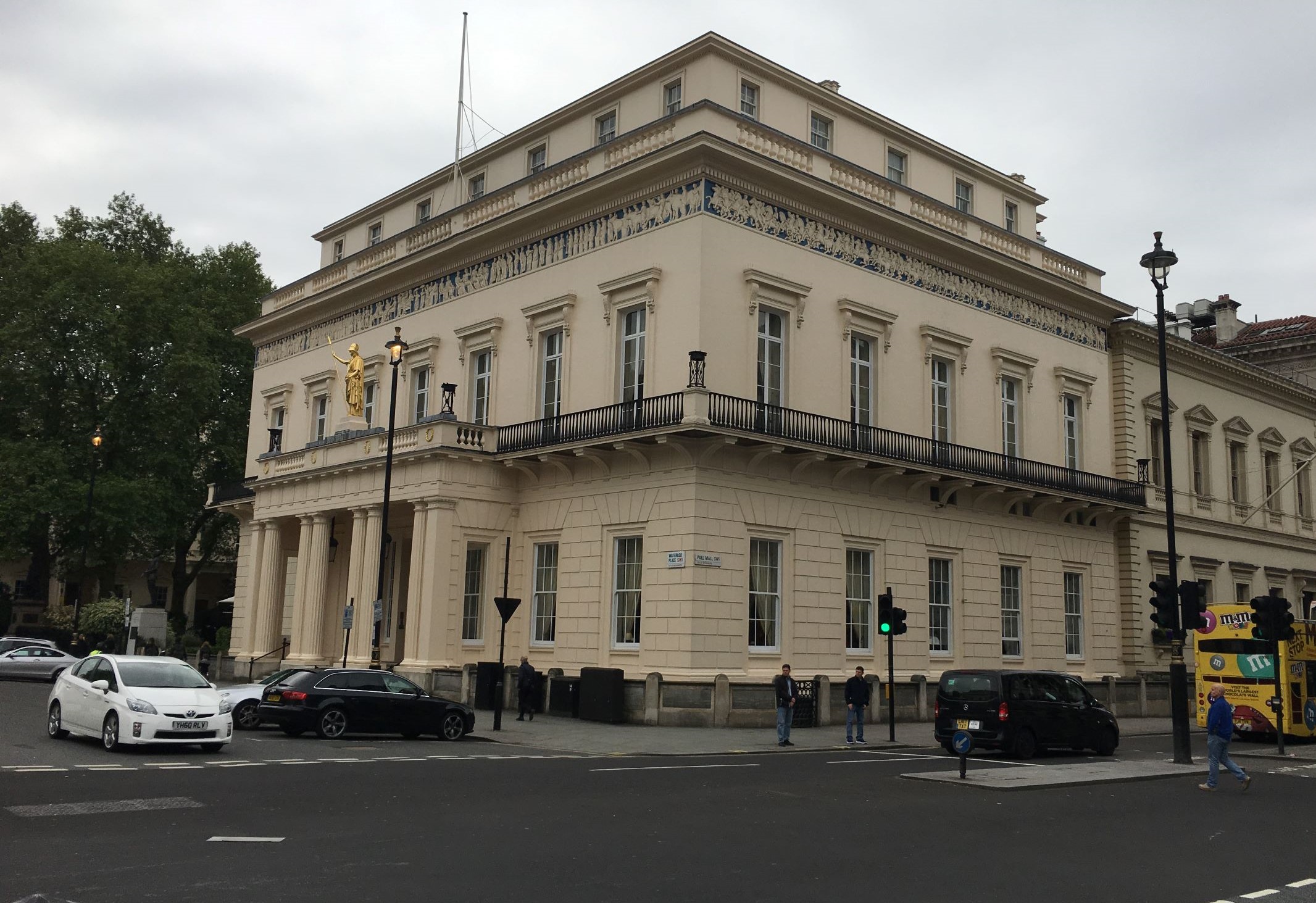
→ The Athenaeum Club, Pall Mall. One of the surviving Gentlemen’s Clubs (although from 2002 membership has been open to both sexes), and a reminder of a bygone era. As befits the name, the club has a copy of the Parthenon freeze – picked out using a blue background – on its façade between the 1st and 2nd floors.
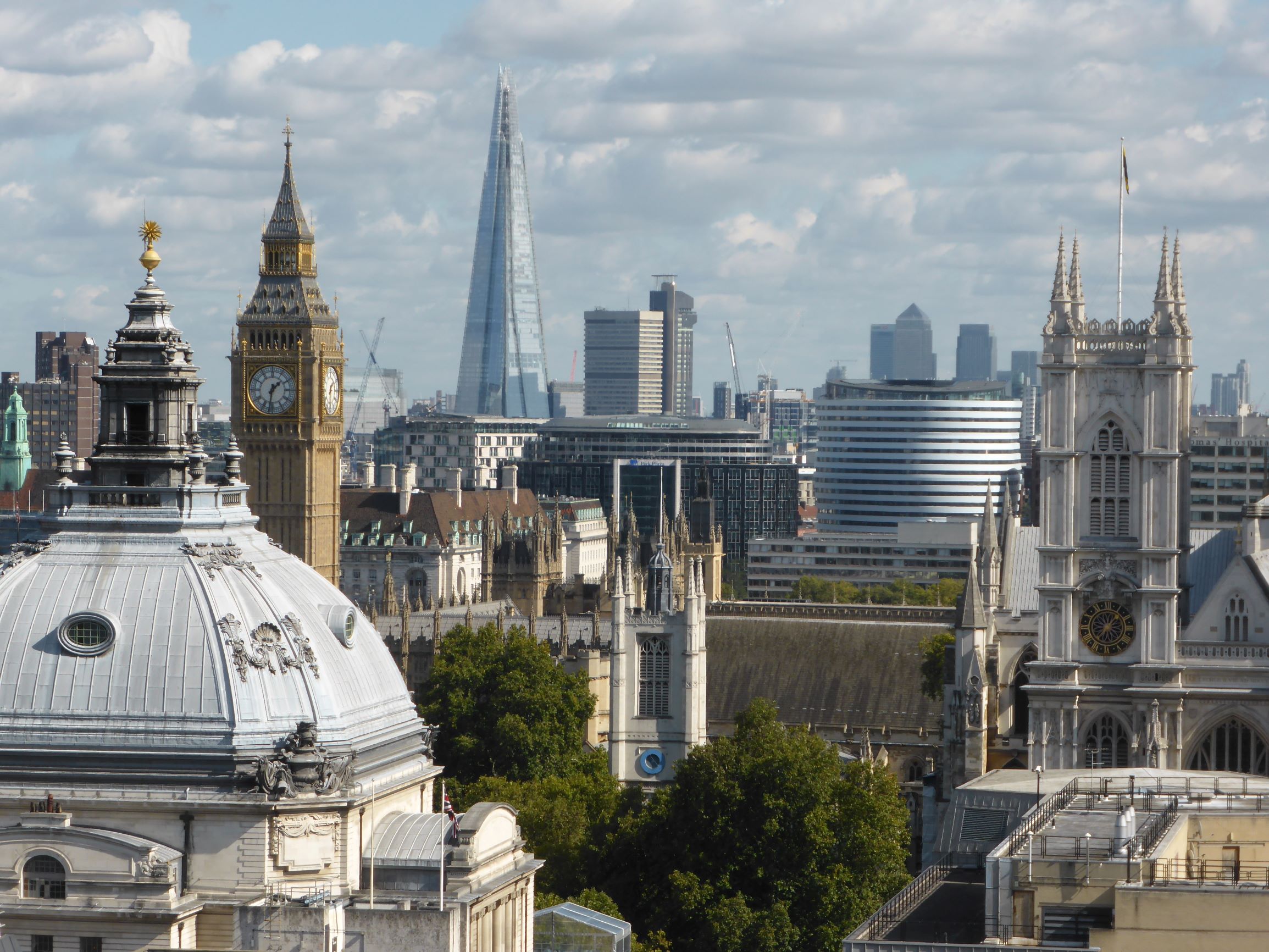
← The London Skyline from the roof of 55 Broadway. This office block in Westminster is the former HQ of London Underground. Opened in 1929, it is stuffed full of art deco detail, and has usually opened for tours over Open House weekend. However, it is scheduled to be converted into luxury apartments, so the opportunity for the public to enjoy this building may be at an end.
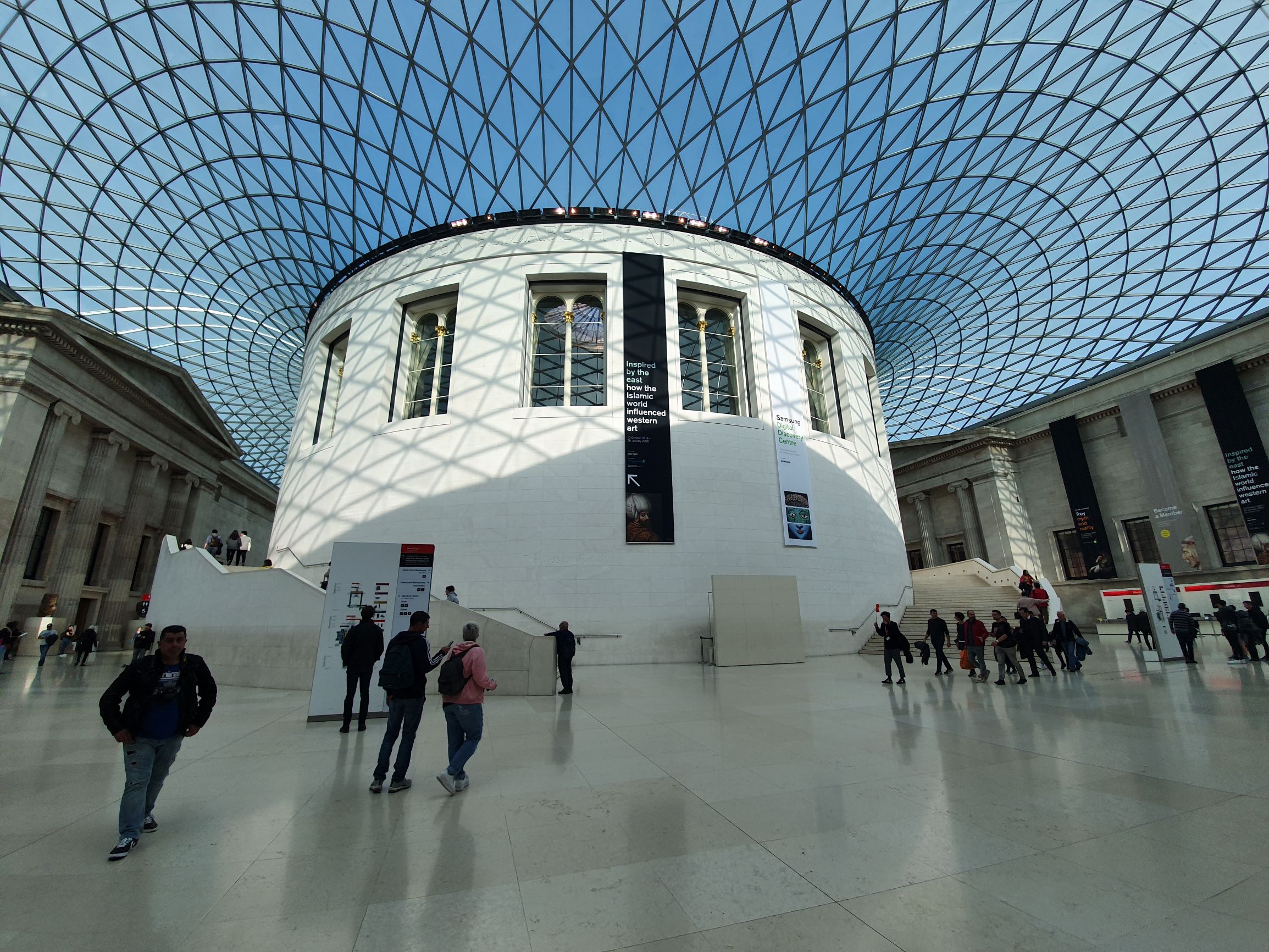
→ British Museum: The amazing roof over the courtyard, with the old Reading Room at its centre. Designed by Foster & Partners and completed in 2000. The Reading Room was part of the British Library which was, administratively, part of the British Museum until 1973. The Library finally moved out in 1997.
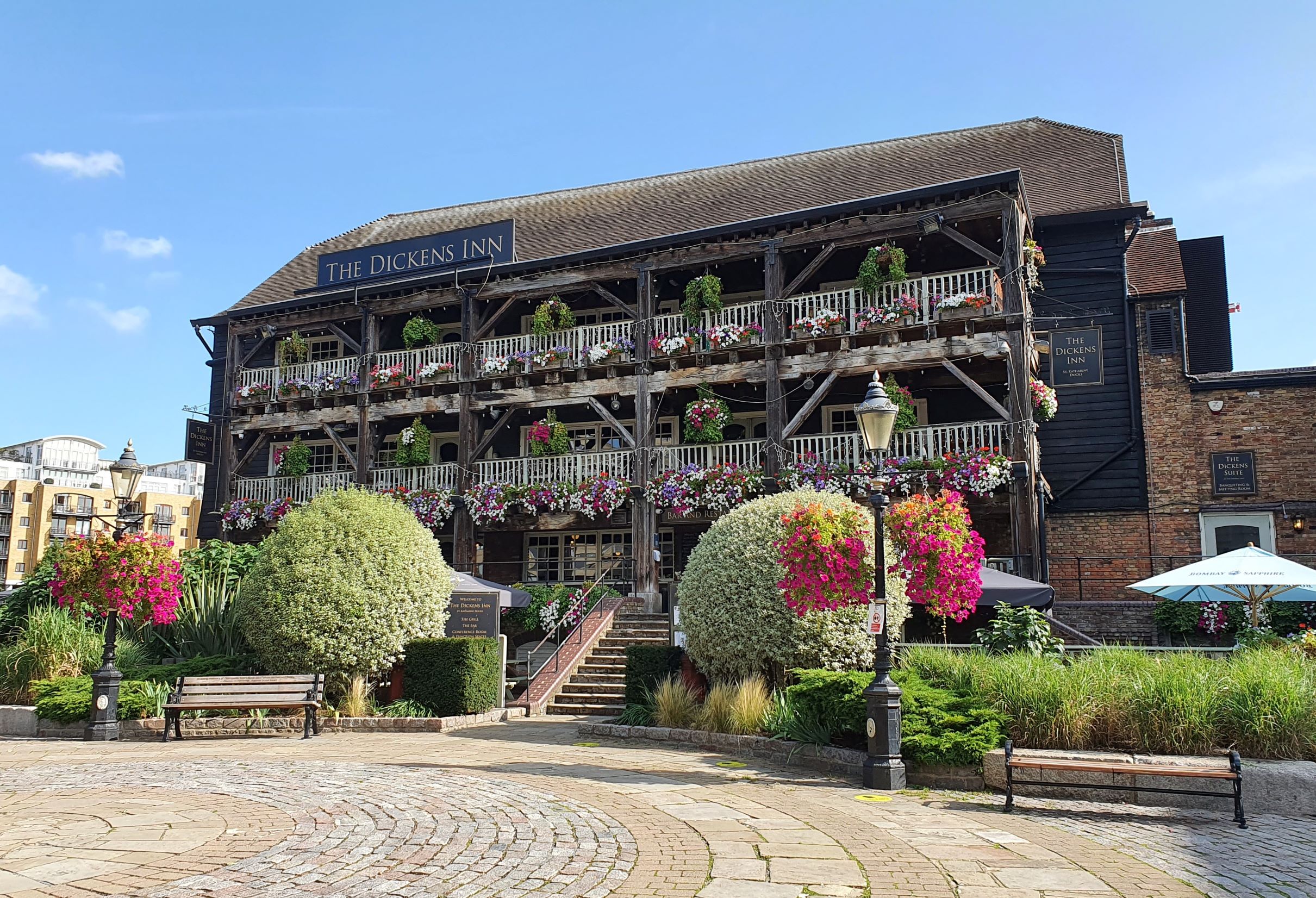
← Dickens Inn, St. Katherine’s Dock: Certainly picturesque, but slightly deceptive. While the building, or former dock warehouse, dates from the early 19th century, the wooden galleries are a 1976 addition. It’s also not in its original location – it was moved 70 metres during the regeneration of the dock.
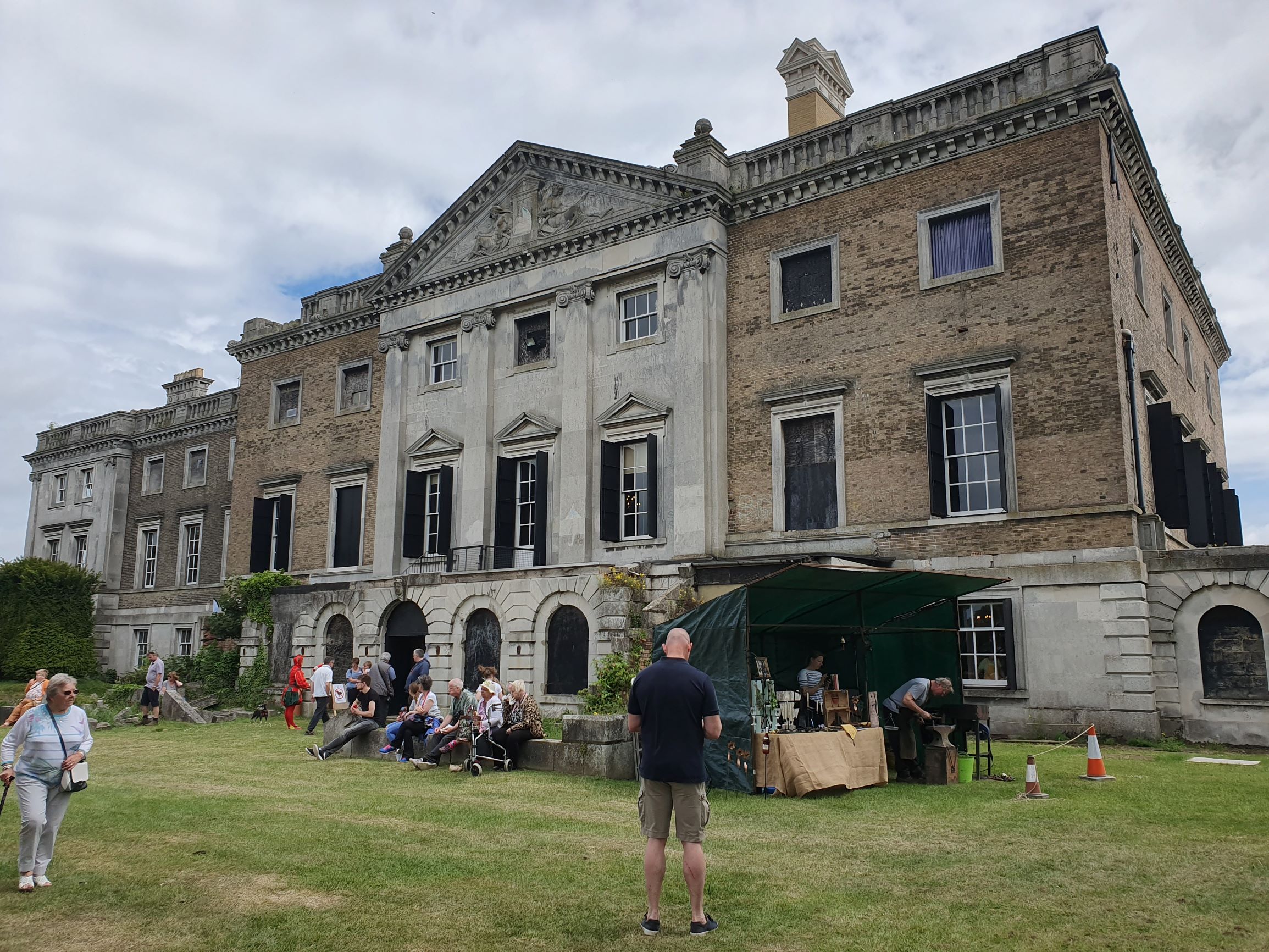
→ Copped Hall: Visible from the M25 between Junctions 26 and 27, it was gutted by fire in 1917 and is now being restored by a trust. It has open days and tours.
In the 1990s, to prevent redevelopment, land around it was bought by the Epping Forest Commissioners – the Corporation of the City of London wearing a different hat.